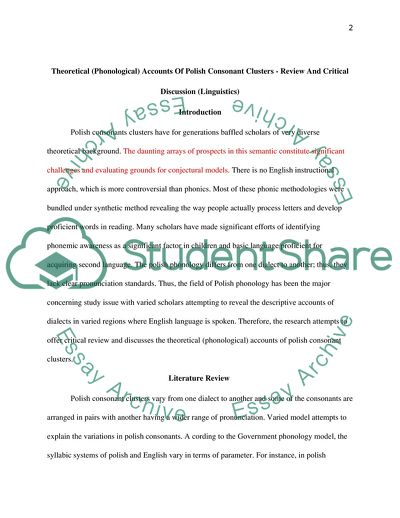Cite this document
(Theoretical Accounts of Polish Consonant Clusters Literature review, n.d.)
Theoretical Accounts of Polish Consonant Clusters Literature review. https://studentshare.org/literature/1801143-theoretical-phonological-accounts-of-polish-consonant-clusters-review-and-critical-discussion-linguistics
Theoretical Accounts of Polish Consonant Clusters Literature review. https://studentshare.org/literature/1801143-theoretical-phonological-accounts-of-polish-consonant-clusters-review-and-critical-discussion-linguistics
(Theoretical Accounts of Polish Consonant Clusters Literature Review)
Theoretical Accounts of Polish Consonant Clusters Literature Review. https://studentshare.org/literature/1801143-theoretical-phonological-accounts-of-polish-consonant-clusters-review-and-critical-discussion-linguistics.
Theoretical Accounts of Polish Consonant Clusters Literature Review. https://studentshare.org/literature/1801143-theoretical-phonological-accounts-of-polish-consonant-clusters-review-and-critical-discussion-linguistics.
“Theoretical Accounts of Polish Consonant Clusters Literature Review”. https://studentshare.org/literature/1801143-theoretical-phonological-accounts-of-polish-consonant-clusters-review-and-critical-discussion-linguistics.


